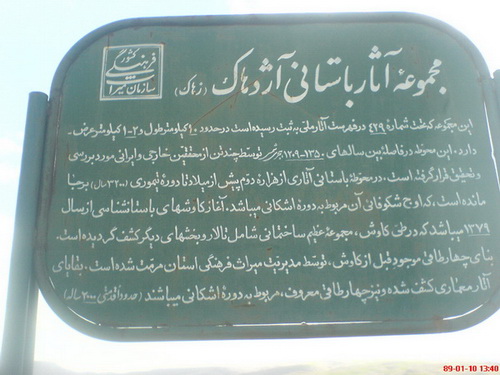The Zahak Castle is located in Hashtrud, within Iran’s East Azerbaijan Province. The name Zahak or Zahhak is derived from ancient Iranian mythology (possibly from Azhi Dahak).
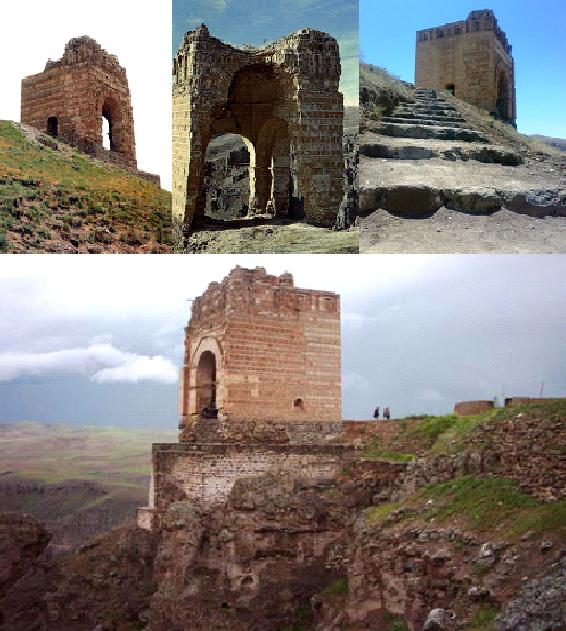 The Zahak castle in Azarbaijan province in northwest Iran. Note pattern of brick works, archways and stairway. The origins of the site has been dated as far back as 2000 BCE, during the reign of the Parthian dynasty (c. 250 BCE-224 CE) (Photo sources: Images forwarded to Kavehfarrokh.com by Ms. Tara Farhid-Gallo in the article –گردایه (مجموعه) باستانی آژدهاک ( ضحاک ) آذرآبادگان– and in Darvakeran Blogspot).
The Zahak castle in Azarbaijan province in northwest Iran. Note pattern of brick works, archways and stairway. The origins of the site has been dated as far back as 2000 BCE, during the reign of the Parthian dynasty (c. 250 BCE-224 CE) (Photo sources: Images forwarded to Kavehfarrokh.com by Ms. Tara Farhid-Gallo in the article –گردایه (مجموعه) باستانی آژدهاک ( ضحاک ) آذرآبادگان– and in Darvakeran Blogspot).
Experts share a general consensus that this region was inhabited from the second millennium BCE until the Timurid era (1370-1507).
The site was first excavated by British archeologists in the 19th century. Iran’s Cultural Heritage Organization has been researching the structure in a methodical six-phase study. The site has also yielded a very rare visual glimpse of what the Mede infantry of the Parthian era may have appeared during the invasion of Marc Antony in 37 BCE. Marc Antony was defeated, in large part due to the actions of the local Median infantry who supported the Parthian armored cavalry and horse archers. There have also been interesting discoveries of stucco from the site, with some traces of coloring still visible. Signage in Azarbaijan province in Iran at the Zahak site (Picture Source: in Darvakeran Blogspot).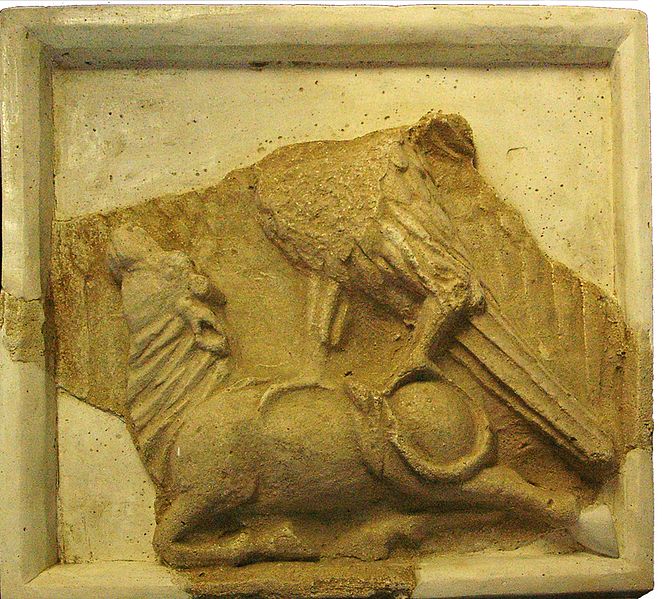
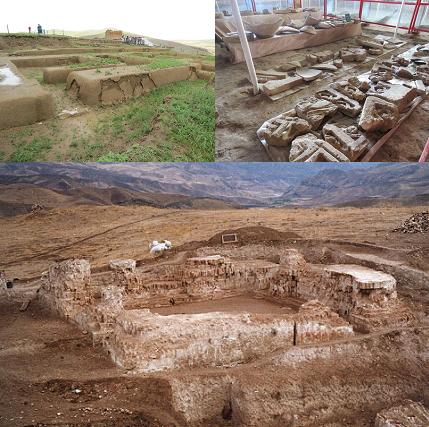 Images of excavation works at the Zahak site in Azarbaijan province (Photo sources: Images forwarded to Kavehfarrokh.com by Ms. Tara Farhid-Gallo in the article –گردایه (مجموعه) باستانی آژدهاک ( ضحاک ) آذرآبادگان– and in Darvakeran Blogspot).
Images of excavation works at the Zahak site in Azarbaijan province (Photo sources: Images forwarded to Kavehfarrokh.com by Ms. Tara Farhid-Gallo in the article –گردایه (مجموعه) باستانی آژدهاک ( ضحاک ) آذرآبادگان– and in Darvakeran Blogspot).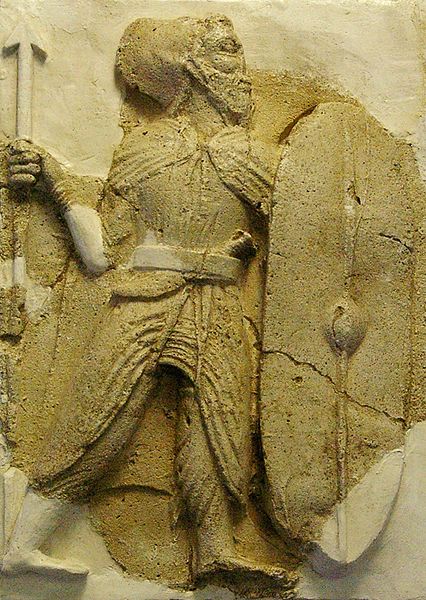 [Click to Enlarge] Another stucco discovered at the Zahak site, now housed in the Museum of Azarbaijan in Iran. The image depicts a Mede infantryman of the Parthian era. It was Mede infantry such as these who defeated the invading troops of Roman general Marc Antony in 37 BCE (Photo sources: Images forwarded to Kavehfarrokh.com by Ms. Tara Farhid-Gallo in the article –گردایه (مجموعه) باستانی آژدهاک ( ضحاک ) آذرآبادگان– and in Darvakeran Blogspot).
[Click to Enlarge] Another stucco discovered at the Zahak site, now housed in the Museum of Azarbaijan in Iran. The image depicts a Mede infantryman of the Parthian era. It was Mede infantry such as these who defeated the invading troops of Roman general Marc Antony in 37 BCE (Photo sources: Images forwarded to Kavehfarrokh.com by Ms. Tara Farhid-Gallo in the article –گردایه (مجموعه) باستانی آژدهاک ( ضحاک ) آذرآبادگان– and in Darvakeran Blogspot).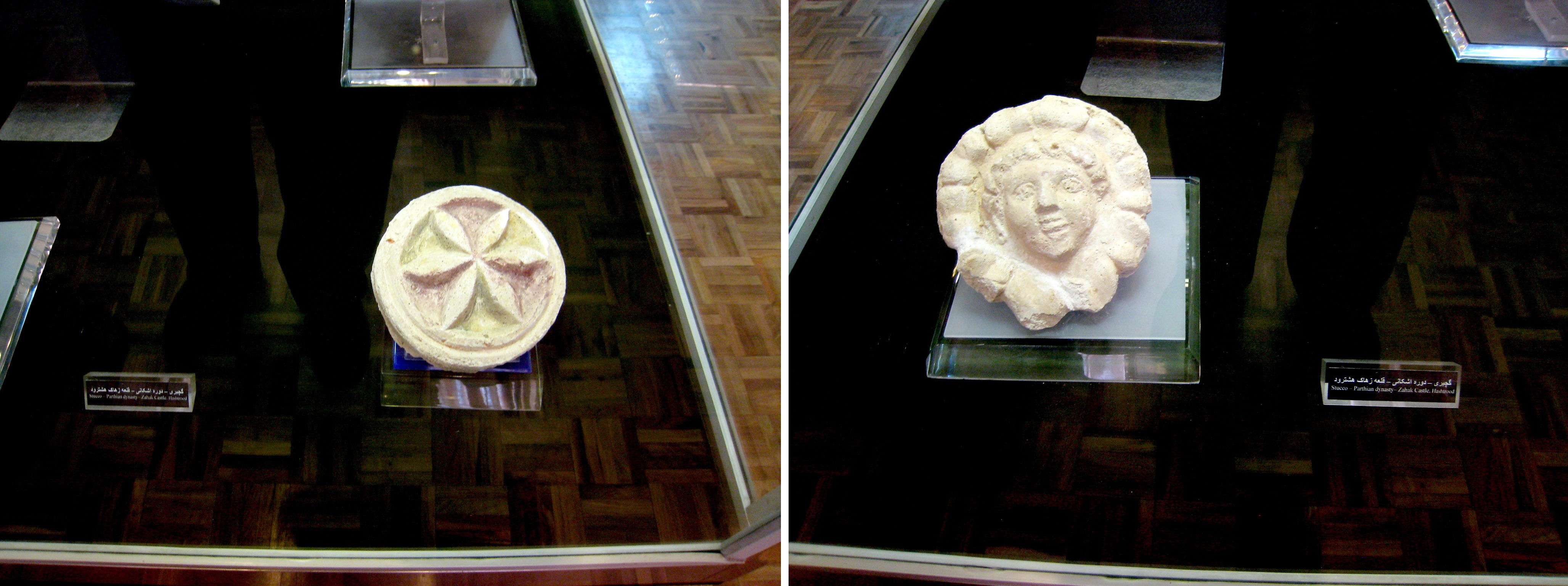 [Click to Enlarge] Display of artifacts discovered at the Zahhak castle, at the Azarbaijan Museum in Tabriz. Note that the left petal-type stucco still has visible traces of red and yellow color with the right facial-flower stucco still bearing traces of yellow upon it (Picture Source: Public Domain).
[Click to Enlarge] Display of artifacts discovered at the Zahhak castle, at the Azarbaijan Museum in Tabriz. Note that the left petal-type stucco still has visible traces of red and yellow color with the right facial-flower stucco still bearing traces of yellow upon it (Picture Source: Public Domain).

